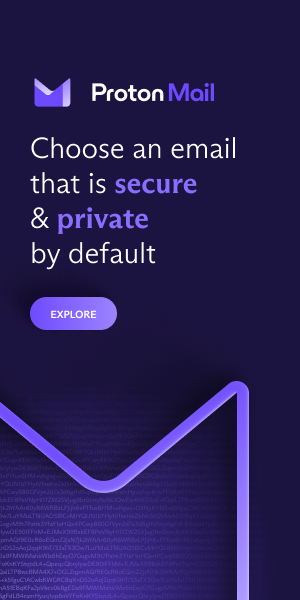Grok 4 Privacy Review 2025 is our independent evaluation of xAI’s Grok 4 and Grok 4 Heavy, set against the backdrop of the Web3 revolution and the quest for sovereign, privacy-respecting AI. Based on an exclusive framework and a rigorous audit of publicly available data, this review reflects our vision of a future where privacy is a fundamental right.
The scoring system follows a comprehensive guide created specifically for this project, accessible here, and is designed to adapt dynamically as innovations emerge and feedback comes from the decentralized community.
Our mission is clear: to enlighten and inform, without filter or influence, so we can build together a fairer, more transparent AI ecosystem.
update : 25/08/11
Key Insights from the Grok 4 Privacy Data Review 2025
Model
Grok 4 / Grok 4 Heavy
Data Collection
Prompts stored: User Content, including prompts, multimodal inputs (images/audio/video), and outputs, is stored with AES-256 encryption at rest and TLS 1.3 in transit; Private Chat ensures deletion within 30 days barring legal/safety exceptions, while standard chats persist for business needs. C
Use for training: User Content may train models unless opted out via settings, with public internet data and X posts (potentially containing personal info) used unrestricted; de-identification via hashed identifiers mitigates risks but doesn’t prevent incidental sensitive data inference. C
Account required: Mandatory accounts collect Account Data (name, credentials, DOB) and third-party login info (e.g., X profile, Google ID), enforcing age gates (13+ with parental consent for minors); this enables persistent tracking via IP-derived Technical Data. C
Data retention duration: Retention aligns with legitimate business purposes, potentially indefinite for legal/compliance, with no universal cap; Private Chat limits to 30 days max, emphasizing data minimization principles. C
User Control
Deletion possible: Users request conversation or account deletion via settings or privacy portal, processed in 30 days subject to legal holds; automated queuing ensures efficiency but exceptions for safety/security persist. B
Export possible: Data access requests under GDPR/CCPA yield personal info copies via Relyance portal, though not self-service or multi-format; appeals process adds user recourse. B
Granularity control: Binary toggles for training opt-out and Private Chat activation provide basic control over data use and visibility; lacks per-data-type or feature-level granularity. B
Explicit user consent: Consent mandated for precise location via GPS/third-parties, withdrawable anytime; core processing relies on terms acceptance with implied consent for training, advising against sensitive inputs. B
Transparency
Clear policy: Comprehensive policy details data categories, uses, and rights with examples, integrated FAQs on training sources; effective July 10, 2025, it promotes transparency via direct links. A
Change notification: Updates posted with new effective dates, proportional notices (e.g., email/in-Service) for material EU changes; global users lack proactive alerts beyond page revisions. B
Model documentation: High-level overviews cover reasoning, 256k context, multimodal support; no deep disclosures on architecture blueprints, parameter scales, or training pipelines. C
Privacy by Design
Encryption (core & advanced): Implements AES-256 at-rest encryption, TLS 1.3 transit protection, and hashed de-identification; absent advanced PETs like homomorphic encryption or differential privacy. B
Privacy-Enhancing Technologies: Data minimization via opt-outs and aggregation, anonymization for deidentified data; no production-scale federated learning or zero-knowledge proofs evident. C
Auditability & Certification: SOC 2 Type 2, GDPR, CCPA compliance claimed, with audit reports/certifications available on request; third-party verifications support but lack public disclosure. B
Transparency & Technical Documentation: Policy offers high-level security flows and trust statements; omits detailed architecture diagrams or data lineage maps. C
User-Configurable Privacy Features: Private Chat for ephemeral storage and training opt-out toggles enable basic customization; no advanced profiles or granular PET integrations. B
Hosting & Sovereignty
Sovereignty: Primarily U.S.-hosted on Colossus supercluster in Tennessee, with no regional sovereignty options; relies on domestic infrastructure for training/deployment. D
Legal jurisdiction: Governed by Texas law under Nevada-based X.AI LLC, weaker than EU standards despite GDPR claims for Europeans; disputes centralized in Tarrant County courts. D
Local option: Exclusively cloud/API-based, no self-hosted or on-premises variants; international transfers use SCCs for compliance. D
Big Tech dependency: Engages subprocessors like Oracle Cloud, NVIDIA GPUs, AWS for scaling; in-house Colossus mitigates but sustains reliance on hyperscalers. C
Open Source
Publicly available model: Grok 4 remains fully proprietary, unlike Grok-1’s Apache 2.0 release; weights and internals closed to public. D
Clear open source license: No OSS license applies; access restricted to API/subscriptions. D
Inference code available: Inference via hosted API only, no public code or downloadable models; supports text/vision but not open execution. D
Remarks
Grok 4 Privacy Review: Overall Score
39.1/100
- Data Collection: 5 + 5 + 5 + 5 = 20
- User Control: 15 + 15 + 15 + 15 = 60
- Transparency: 20 + 15 + 5 = 40
- Privacy by Design: 15 + 5 + 15 + 5 + 15 = 55
- Hosting & Sovereignty: 0 + 0 + 0 + 5 = 5
- Open Source: 0 + 0 + 0 = 0
Total: 20 + 60 + 40 + 55 + 5 + 0 = 180
23 × 20 = 460
180 / 460 × 100 = 39.13
This evaluation of Grok 4 Privacy Review is provided for informational purposes only and reflects a subjective analysis based on publicly available data at the time of publication. We do not guarantee absolute accuracy and disclaim all liability for errors or misinterpretations. Any disputes must be submitted in writing to futurofintenet@proton.me
For full methodology, see our complete scoring guide here: LLM Privacy Rating Guide





